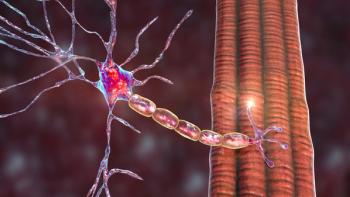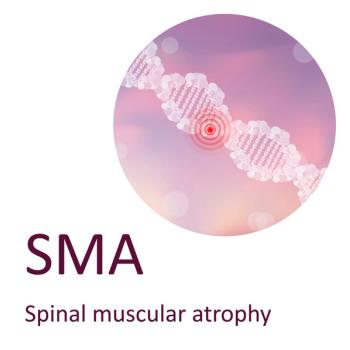
Combining SMA Therapies Show Promise Without Added Safety Risks
The combination of Spinraza and Zolgensma could improve clinical outcomes in infants with spinal muscular atrophy without added risks.
In one of the first comprehensive safety analyses of its kind, researchers found that combining two different therapies for spinal muscular atrophy (SMA) appears safe and could potentially improve outcomes for infants, particularly when gene therapy is delayed, according to new
The study from Massachusetts General Hospital found that combining Spinraza (nusinersen) with Zolgensma (onasemnogene abeparvovec) gene therapy did not increase safety risks compared with using Zolgensma alone. The research followed 14 infants ranging from just over 2 weeks old to approximately 2.5 years of age. Eight received Zolgensma alone in the pre-symptomatic stage, while six who had already developed symptoms received both Zolgensma and Spinraza.
SMA is a rare genetic disorder that leads to severe muscle weakness, often appearing within the first six months of life. Without treatment, most children with the most common form of SMA die before age 2 from respiratory failure. The approval of three disease-modifying therapies since 2016 has transformed the treatment landscape. While Zolgensma provides a one-time gene replacement therapy, Spinraza requires ongoing administration into the spinal fluid. A third option, Evrysdi (risdiplam), is taken orally.
Liver toxicity is a key safety concern with gene therapy for SMA. Doctors monitor this through blood tests measuring enzymes called ALT and AST, which can indicate liver damage when elevated. To help mitigate this risk, all patients received the steroid prednisolone starting 48 hours before gene therapy and continuing for two to three months afterward
Among patients who received Zolgensma alone, only one presymptomatic infant showed concerning liver enzyme spikes, while three of six patients in the combination therapy group experienced elevations. The researchers found that older patients tended to have more significant liver complications, but all cases resolved within three months of treatment and remained stable during follow-up.
The study also found signs of other medical issues common in SMA patients. Most showed increased levels of troponin T, which can indicate heart muscle damage, and thrombocytosis, a blood disorder marked by excess platelets. However, the researchers determined these effects stemmed from SMA itself rather than the treatments.
“This study highlights the importance of early intervention with molecular treatments for SMA and indicates that prior or coincident treatment with [Spinraza] is unlikely to impact safety of [Zolgensma],” the study authors wrote. “These treatments could theoretically improve clinical outcomes in symptomatic infants or in those with gene therapy delayed beyond the immediate neonatal period.”
Newsletter
Get the latest industry news, event updates, and more from Managed healthcare Executive.





















































